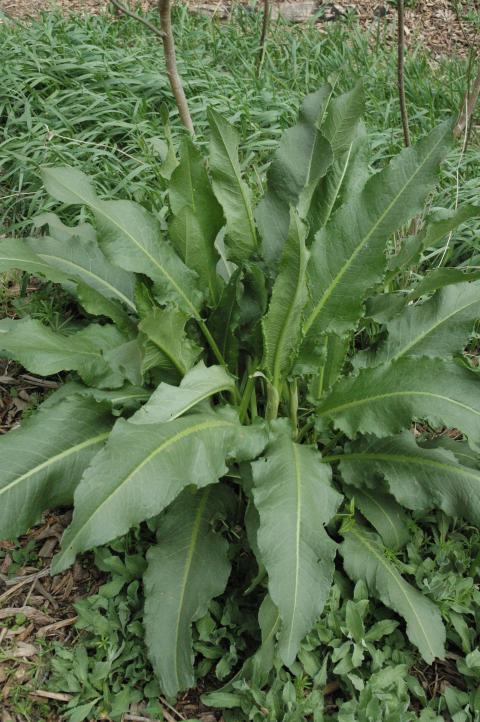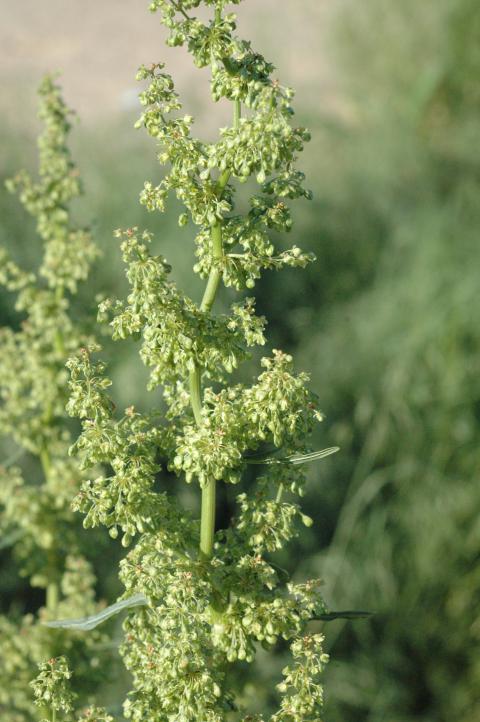Invasive Watch: Curly Dock

This invasive and resilient pest poses threats throughout pastures and roadways in all Western states. Learn how to identify and control it effectively.
This invasive and resilient pest poses threats throughout pastures and roadways in all Western states. Learn how to identify and control it effectively.
Curly dock (Rumex crispus) is a perennial broadleaf weed that is capable of thriving in almost any disturbed geography, including pastures, fields, roadsides and predominantly wet areas. In addition to being mostly toxic to livestock, this invasive plant species can cause the following issues along roadside rights-of-way:
As a particularly tenacious weed, curly dock grows back with a vengeance if it is not controlled effectively. In fact, any root chunks left behind after pulling or digging practices will simply sprout a new plant, making infestations easy to identify but difficult to control with manual or mechanical treatment methods. Keep an eye out for the following features to identify curly dock on your managed land before it becomes a widespread issue:
Capable of developing in full sun or partial shade, curly dock can grow up to 5 feet tall with hairless leaves that reach 12 inches long and 2.5 inches wide. The plant’s leaves are attached to a basal rosette by slimy leaf stems, which are enclosed by a thin sheath. During early stages of development, the plant’s wavy or curly leaves will appear green in color. As the plant ages, the leaves will unroll and dry out, turning to shades of rusty red. This process also dries out the plant’s stems and sheaths.

Curly dock also bears multiple clusters of three-winged flowers on the plant’s upper stems. Much like the rest of the plant, these flowers turn reddish-brown as the plant matures. The plant also features a thick and bright-yellow taproot, which can grow up to 4 feet long. While curly dock can resprout easily from this taproot when controlled mechanically, the plant’s flowers also produce thousands of seeds that can be spread by wind, water or animal wildlife for reproduction.

Various application methods can be used to control varying densities of curly dock, but few are as effective as selective herbicide applications. That’s because hand-pulling and mechanical mowing can stimulate regrowth and spread viable seeds. Conversely, targeted applications of selective herbicide tank mixes can control the entire plant to mitigate the risk of reestablishment.
HighNoon® herbicide from Corteva Agriscience is a recommended solution for each of the following herbicide treatment strategies. Spray volume should be adjusted in accordance with the height and density of targeted vegetation to ensure thorough and uniform coverage. An approved nonionic agricultural surfactant also can be added per the surfactant label and used to enhance foliage wetting and coverage.
HighNoon® herbicide pairs the active ingredient in Milestone® herbicide (aminopyralid) with Rinskor® active — the first new active ingredient available for rangeland and pastures in nearly 15 years. This delivers new modes of action that can enhance results across multiple noncrop use sites, which provides the application flexibility professionals need to improve the efficacy, productivity and cost efficiency of their respective programs.
To learn more about best management practices that can effectively control incompatible vegetation on noncrop sites throughout the Western Rangeland region, click here.
Under normal field conditions, HighNoon® is nonvolatile. HighNoon and Milestone® have no grazing or haying restrictions for any class of livestock, including lactating dairy cows, horses (including lactating mares) and meat animals prior to slaughter. Label precautions apply to forage treated with HighNoon or Milestone and to manure and urine from animals that have consumed treated forage. HighNoon and Milestone are not registered for sale or use in all states. Contact your state pesticide regulatory agency to determine if a product is registered for sale or use in your state. Consult product labels for full details. Rinskor® is a registered active ingredient. Always read and follow label directions.
For over 30 years, Vistas® has covered strategies, trends and stories from across the Vegetation Management industry.